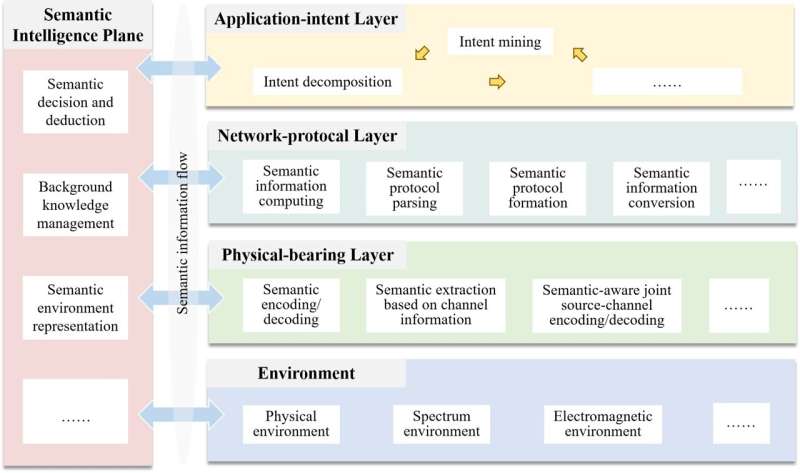This article has been reviewed according to Science X's editorial process and policies. Editors have highlighted the following attributes while ensuring the content's credibility:
fact-checked
trusted source
proofread
Advances and challenges in semantic communications: A systematic review

This study was led by Prof. Ping Zhang, Dr. Yiming Liu, Yile Song, and Jiaxiang Zhang (State Key Laboratory of Networking and Switching Technology, Beijing University of Posts and Telecommunications).
Their article summarizes the advances made in semantic information and semantic communications. It also discusses the main challenges, key issues, and potential research directions in developing modern semantic communication, aiming to prompt further scientific and industrial advances in semantic communications.
The development of information and communication technology (ICT) has had a significant impact on modern society. The evolution of mobile communication systems from the first generation (1G) to the fifth generation (5G) has been characterized by capacity expansions and technological advancements. However, these advancements have primarily focused on increasing the physical dimension of information transmission while approaching the limits of Shannon's information theory.
Prof. Ping Zhang and his team proposed modern semantic communications. Utilizing the natural redundancy of information, they co-design source compression and channel transmission, compensating for transmission errors and achieving end-to-end system-wide optimization.
This article conducts a comprehensive survey of modern semantic communication theories and methods and provides an in-depth introduction to modern semantic communication research, including the semantic base (Seb)-based semantic transmission framework and semantic communication-empowered intelligent and concise (Intellicise) networks.
This review provides an in-depth introduction to a new basic model of semantic information representation, the Seb model, and further discusses the Seb-based semantic transmission framework, including semantic representation and encoding, semantic modulation, semantic knowledge base modeling, semantic metrics, etc.

Then, this review explores the potential applications of modern semantic communication technology, including Intellicise networks, goal-oriented applications, and the metaverse.
The Intellicise networks emphasize the use of native intelligence and endogenous simplified architecture to achieve system optimization. With nodes possessing intelligence, the network itself will gradually evolve towards a native intelligent system, ultimately achieving a state of self-evolution, self-optimization, and self-balance.
In this context, semantic communication has shown great potential in extracting and transmitting the meaning of information and is envisioned as a promising technology for Intellicise networks. Moreover, semantic communication has a wide range of potential application scenarios for vertical fields, including intelligent health care, intelligent transportation, intelligent factories, etc.
Finally, this review elaborates on open issues and key challenges in semantic communication and explores potential research directions to promote further research on modern semantic communication theories and methods.
Semantic communication has become one of the current 6G candidate key technologies. By innovating basic information theories and achieving key breakthroughs in intelligence, information, communication, and network technologies, it aims to transform the paradigm of communication systems.
The work is published in the journal National Science Open.
More information: Ping Zhang et al, Advances and Challenges in Semantic Communications: A Systematic Review, National Science Open (2023). DOI: 10.1360/nso/20230029




















